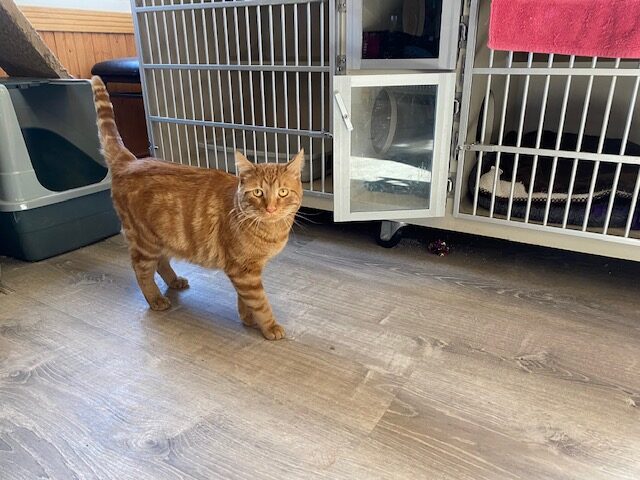
21 Apr Second Chance: Bug Off With Catnip!
Second Chance Humane Society’s Animal Resource Center and Thrift Shops have been serving San Miguel, Ouray & Montrose Counties for 27 years. Call 626-2273 to report a lost pet, learn about adopting a homeless pet, or about our Emergency Response, Community Medical, Spay/Neuter, Volunteer, or other services. View our shelter pets and services online: www.adoptmountainpets.org.
Go here to check out other Second Chance friends.

Leo
Catnip. Even the word sounds alluring, perhaps because it sounds so much like catnap, another luxurious delight. Catnip is a special and magical plant to the feline (including wild felines like lions, leopards, lynxes and jaguars), the only animal able to elicit a euphoric, not to mention hallucinogenic, response from rubbing against the wonder-flora. But now humans are utilizing another special power of the plant – insect repellent.
That’s right, researchers report that nepetalactone, the essential oil in catnip that gives the plant its characteristic odor and also triggers various responses in cats, is proving to be about 10X more effective at repelling mosquitoes than DEET, the nasty chemical compound used in most commercial insect repellents (that also kills other critical non-nuisance insects). And interestingly, the application of catnip as a mosquito repellent came two years after its efficacy as a cockroach repellent was discovered.
Catnip is a perennial herb belonging to the mint family that grows wild in most parts of the United States, although it also is cultivated for commercial use. It is native to Europe and was introduced to this country in the late 18th century. Some people use the leaves in tea as a meat tenderizer and, more importantly, as a natural treatment for a variety of ailments including nervousness and anxiety, indigestion, cramping, and insomnia. It has also been used to naturally treat fevers, colds, arthritis, hives and migraines or as a diuretic.
Research indicates that the plants effect on cats may be due to an unusual interaction between nepetalactone and a molecular component present in the reward system of the cat brain, but not all cat brains. To about 60 to 70% of cats it is the balm of delight, but the response varies per cat. For some, the euphoria translates into aggressive playfulness while it makes others mellow and calm. Though intense, the bliss-response is usually short-lived, about 10 minutes for most felines. But no matter what reaction your cat has, once the pleasure passes it’ll be about two hours before a kitty’s brain responds to catnip again.
From an evolutionary perspective the insect repelling qualities of cat mint may have helped our feline ancestors to hunt. Ambushing prey requires being very still, which would challenging when surrounded by biting mosquitoes. It could therefore be argued that there is a strong selection pressure to keep away annoying bugs and hunting amidst an abundance of catnip would be advantageous.
Long story short, catnip is awesome sauce for not only cats and people, but also the planet. It so happens that bees really like the flower of the catnip so planting some in your garden has extra environmental value! Catnip, it’s not just for breakfast.
My name is Leo, King of the Catnip. I am a very handsome, 1-year-young boy with an outgoing and adventurous demeanor. I am an active guy who enjoys regular chat sessions with my staff here at Second Chance. Human touch from strangers is a bit scary to me at first, but once you are one of my people I love affection. I also enjoy the company of dogs and cats who are polite. The most important thing about me is that I am ready for my forever home and would love to meet you…


Julia Smith Rogers
Posted at 07:35h, 12 MayWhat a wonderful post! Catnip what a name! One would wonder about the nomenclature of this plant. No one really knows as to how it got such a name, but, surely, years and years of observation and behavior of cats towards this plant have indeed made us humans believe that this plant should surely be called Catnip!